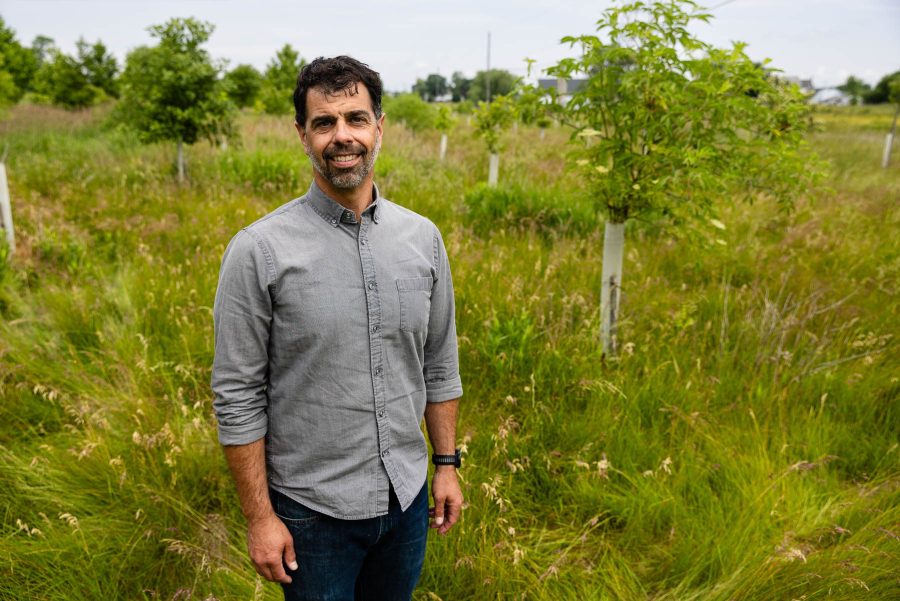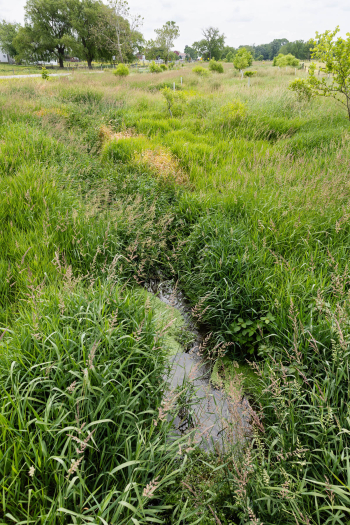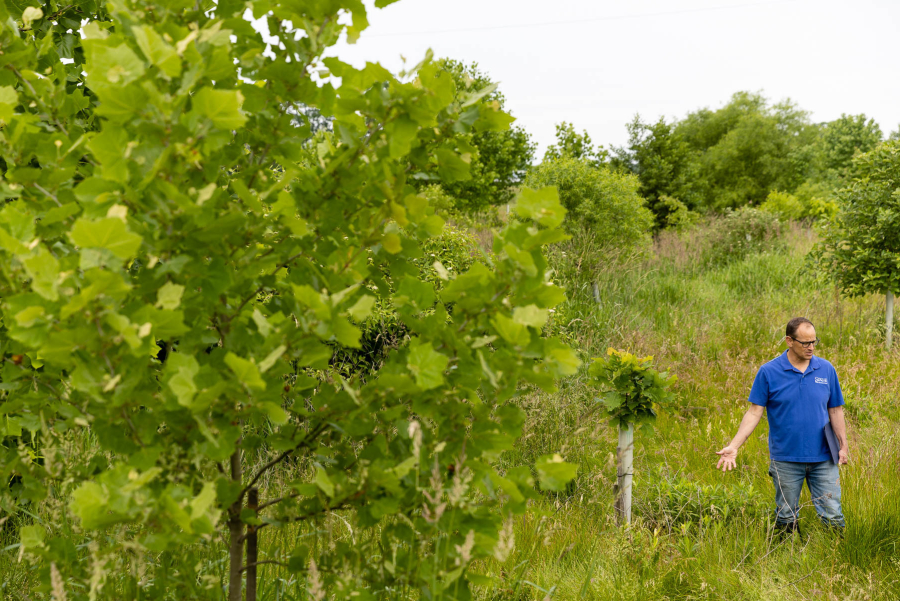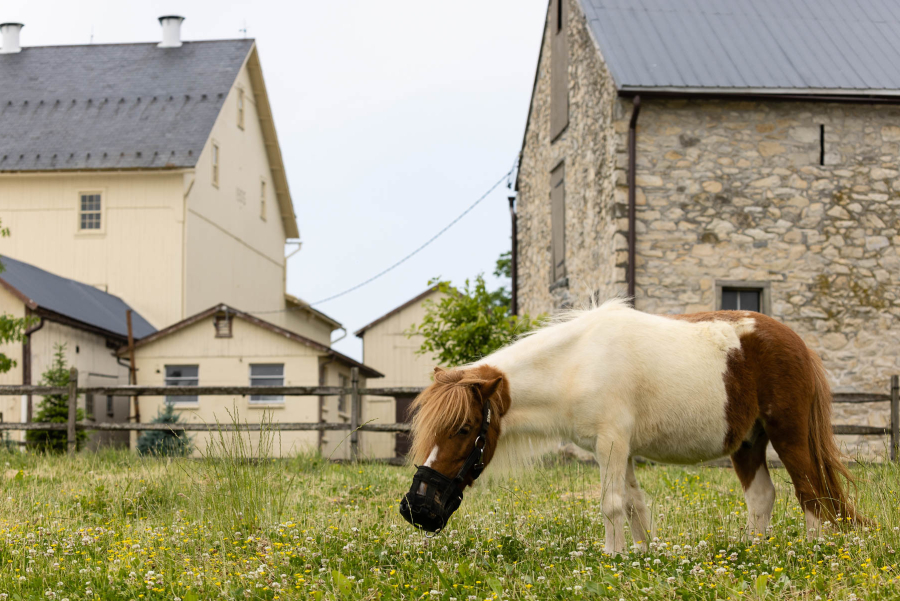Family farm in Ronks, Pa. does all it can to help local streams recover
The USDA’s Conservation Reserve Enhancement Program (CREP) helps to reduce pollution in a Chesapeake Bay tributary’s watershed

When driving past the Denlinger Farm on Lynwood Road in Ronks, Pennsylvania, you can hardly see the stream that runs parallel. Trees, shrubs and a variety of tall grasses line the waterway, attracting a collection of insects and other wildlife.
If you would have driven on this same road 10 years ago, your view would have been much different. The absence of a fence allowed cattle, horses and other livestock to enter the stream and with no natural buffer, stormwater runoff flowed directly into the waterway, bringing with it fertilizer and manure runoff from the region’s multiple farms.
The 93-acre Denlinger Farm is one of many farms that reside along this stream—an unnamed tributary to Mill Creek, which eventually flows into the Susquehanna River. Although the Denlingers have owned the property since 1855, the family rented out their farmhouse and land to a number of families for almost 100 years, over which time the tributary became impaired.
“It was pretty obvious that the stream wasn't being taken care of the way we wanted it to be,” explains David Denlinger, retired professor of entomology at Ohio State University.

In 2014, Jonathan and Rebecca Denlinger, and Jonathan’s parents David and Judith Denlinger, moved back onto the property. Soon after returning, the family decided to do what they could to repair the property and enrolled in the United States Department of Agriculture’s (USDA) Conservation Reserve Enhancement Program (CREP). Administered by the Farm Service Agency (FSA), this program aims to help agricultural landowners meet their conservation goals. In this case, the goal was to install practices that could help the stream recover and protect it from livestock and fertilizer runoff.
First to be installed was the 7.5-acre riparian forest buffer planted along the unnamed tributary. Made up of native trees, shrubs and perennial plants, stream buffers help absorb runoff before it reaches the water while providing habitat to wildlife. Now nearly 10 years old, the buffer is so lush and matured that you can hardly see the stream while on the Denlinger property. According to David Denlinger, pollinators and mammals like deer and fox are all drawn to the vegetation.
Through CREP, the Denlingers also installed a fence to protect the buffer. Currently, the family owns cattle, sheep, goats and horses, all of which naturally want to drink from the stream. While a convenient water source, these animals would flatten the shrubs and grasses that make up the new riparian buffer, defeating its purpose.

On the other hand, when animals drink stream water contaminated from manure, it increases their risk of chronic toxicity, high iron, mineral deficiencies, lower overall weight and decreased milk production in lactating cows.
To accommodate these concerns, a wire fence was constructed to protect both the buffer and animal health. To provide livestock with another source of drinking water, the Denlingers installed water troughs on the land.
In addition to USDA’s CREP program, funding for the Denlingers’ conservation practices came from the Stroud Water Research Center, Chesapeake Bay Foundation and other environmental organizations.

Eventually, the Denlingers hope to have the stream delisted from the Pennsylvania Department of Environmental Protection’s impaired waters list. Recovery of degraded stream systems can take decades, especially in watersheds such as theirs, where the headwaters are near multiple residential properties and a major road network instead of acres of forest.
Luckily, the Denlingers are not the only landowners in the area adopting conservation practices. Four other farms in their watershed have implemented buffers and manure storage systems, and two additional farms will be installing similar practices after finalizing their nutrient management plans.
When everyone works together, small improvements in a little tributary in Lancaster County can make a big difference for not only the people that live there, but also the Chesapeake Bay.

Comments
Thank you for your concern for the environment. Hope more owners follow your lead.
Thank you!
Your comment has been received. Before it can be published, the comment will be reviewed by our team to ensure it adheres with our rules of engagement.
Back to recent stories